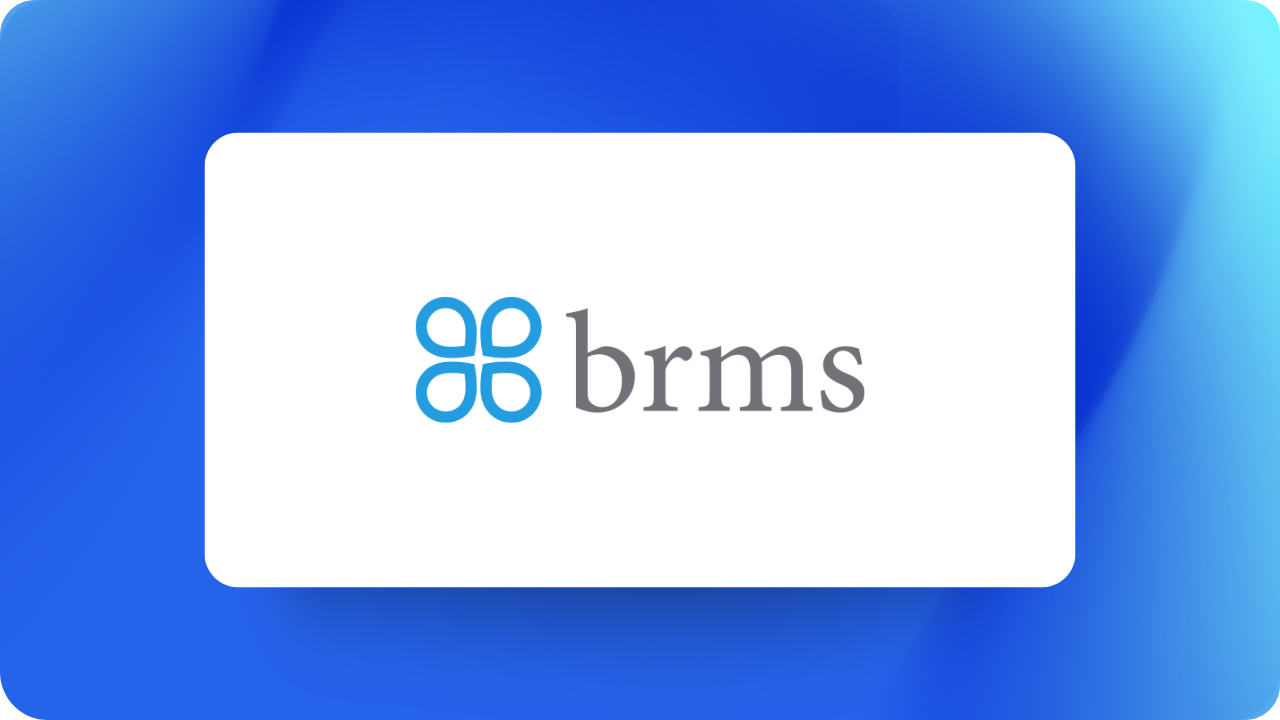BRMS Optimizes Hybrid Workforce Productivity
with Teramind
Learn how BRMS used Teramind to optimize productivity and save on hiring costs while transforming their approach to workforce analytics.

Company Profile
- Industry: Business Services
- Work Model: Hybrid (4 days office, 1 day remote)
- Challenge: Maintaining productivity in transition from office to hybrid work
Challenge
BRMS, like many companies, had no experience with remote work before COVID-19. As they transitioned to a hybrid model with employees working one day remotely, they noticed a decline in productivity despite maintaining the same staffing levels. This created several challenges:
- Reduced output despite maintaining the same number of employees
- No visibility into actual work activities during remote days
- Difficulty determining if productivity issues warranted additional hiring
- No objective way to verify productive time beyond physical presence
- Limited tools to understand remote work effectiveness
“Before COVID, we never even had anyone working from home. We had the same number of employees, but they weren’t getting as much work done,” explains Stacie Lautrup, VP of Human Resources at BRMS.
Solution
BRMS implemented Teramind with a focus on transparency and education:
Implementation Approach:
- Deployed Teramind to all employees with remote access
- Communicated openly about monitoring in company meetings
- Limited initial access to HR and Finance leadership during configuration
- Focused on learning the system thoroughly before expanding access
- Worked closely with Teramind account manager for optimization
“We decided to invest in Teramind rather than human capital at this point to make sure that we know what we’re dealing with as far as productivity.”
How Teramind Solved BRMS’ Challenges
Specific Challenge | Teramind Solution Applied | Measurable Business Impact |
Decreased productivity in hybrid work model | Comprehensive activity monitoring with login time and active hours tracking | Identified significant gaps between expected and actual productive time; enabled targeted interventions to improve productivity |
Unable to determine if staffing increase was necessary | Detailed productivity analytics showing actual vs. potential output | Avoided unnecessary hiring costs by optimizing existing workforce productivity; saved significant personnel expenses |
No visibility into remote workday activities | Screen snapshots and activity tracking during remote work days | Gained clear evidence of actual work patterns; transformed accountability discussions with objective data |
Difficulty identifying causes of productivity decline | Time distribution analytics across applications and activities | Distinguished between technical barriers and work avoidance; developed targeted solutions for specific issues |
No way to verify actual productive time vs. logged-in time | Active time tracking with productivity percentage calculations | Discovered some employees logged 8 hours but only worked 5 productive hours; established clear expectations for remote work |
Inability to create appropriate accountability in remote setting | Transparent monitoring with clear communication about expectations | Created culture of accountability where remote employees understood expectations; improved overall productivity |
Results
Data-Driven Workforce Optimization
Teramind provided concrete data that transformed their understanding of productivity:
- Identified specific gaps between expected and actual productive time
- Discovered significant variations in remote work effectiveness
- Created objective basis for performance discussions
- Enabled optimization of existing workforce rather than expansion
Enhanced Accountability
The platform created a culture of transparency and accountability:
- Established clear expectations for remote work productivity
- Provided objective evidence for performance discussions
- Created awareness that work activities were being monitored
- Enabled identification of both underperformers and top performers
“When someone’s trying to tell us, ‘No, I was doing XYZ,’ we can say, ‘Let’s look at your screen at that time and see.'”
Balanced Recognition
Teramind provided a complete picture of workforce performance:
- Identified both productivity challenges and excellence
- Created opportunities to recognize high performers
- Provided balanced view of hybrid work effectiveness
- Established foundation for fair performance evaluation
“It validates the good too—the employees that are being overly productive.”
Financial Impact
The implementation delivered substantial financial benefits:
- Avoided unnecessary hiring by optimizing existing workforce
- Created a data-driven approach to resource allocation
- Enabled targeted interventions instead of broad solutions
- Established foundation for sustainable hybrid work model
Future Plans
BRMS continues to develop their Teramind implementation with several initiatives:
- Creating department-level reports for managers
- Expanding from individual to team-level productivity insights
- Preparing for upcoming improvements to the Teramind interface
- Exploring process improvement opportunities identified through activity analysis
“Our next goal is having a department report that we can send to the managers and our Teramind rep is amazing. He really cares, and that comes through.”
